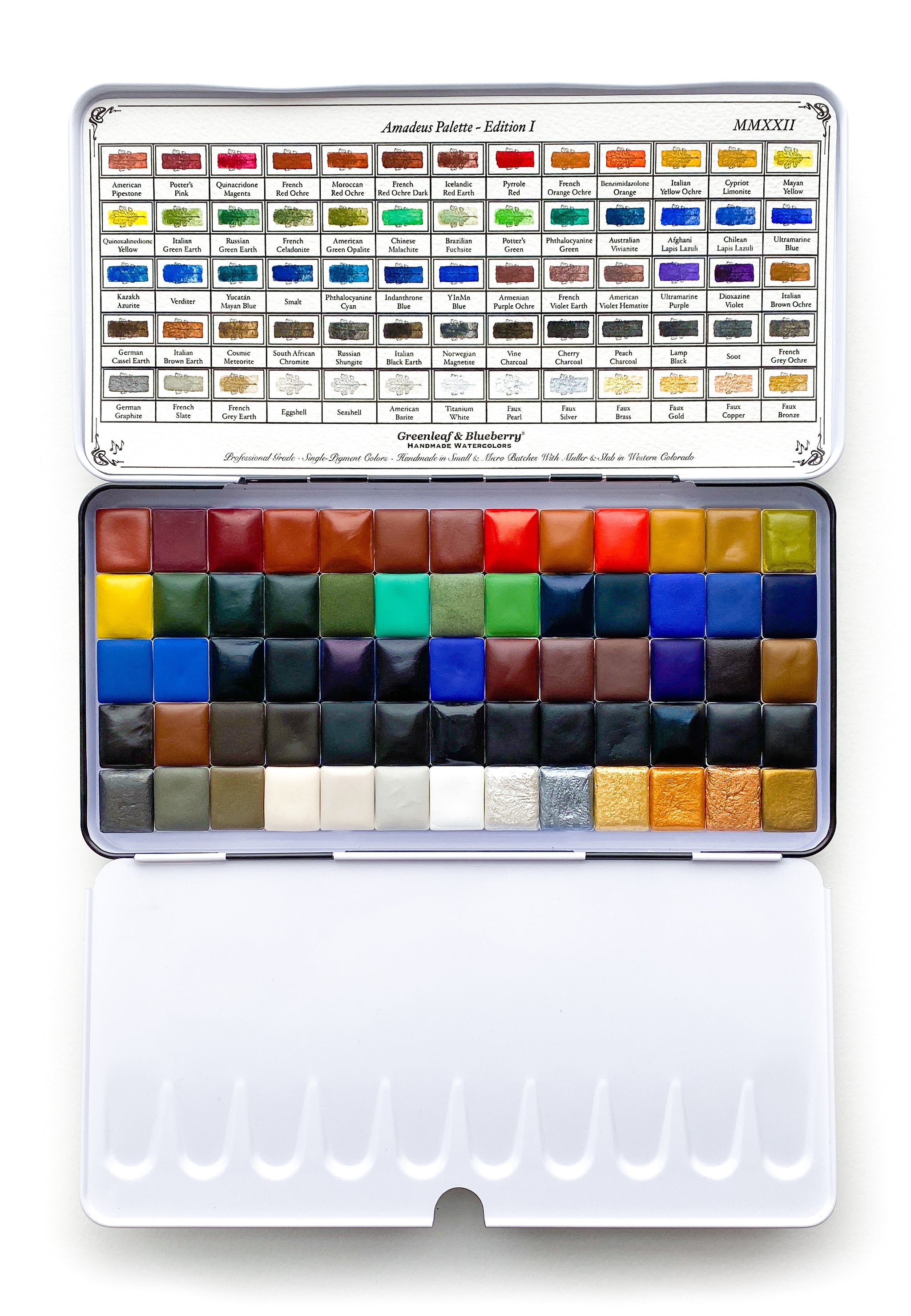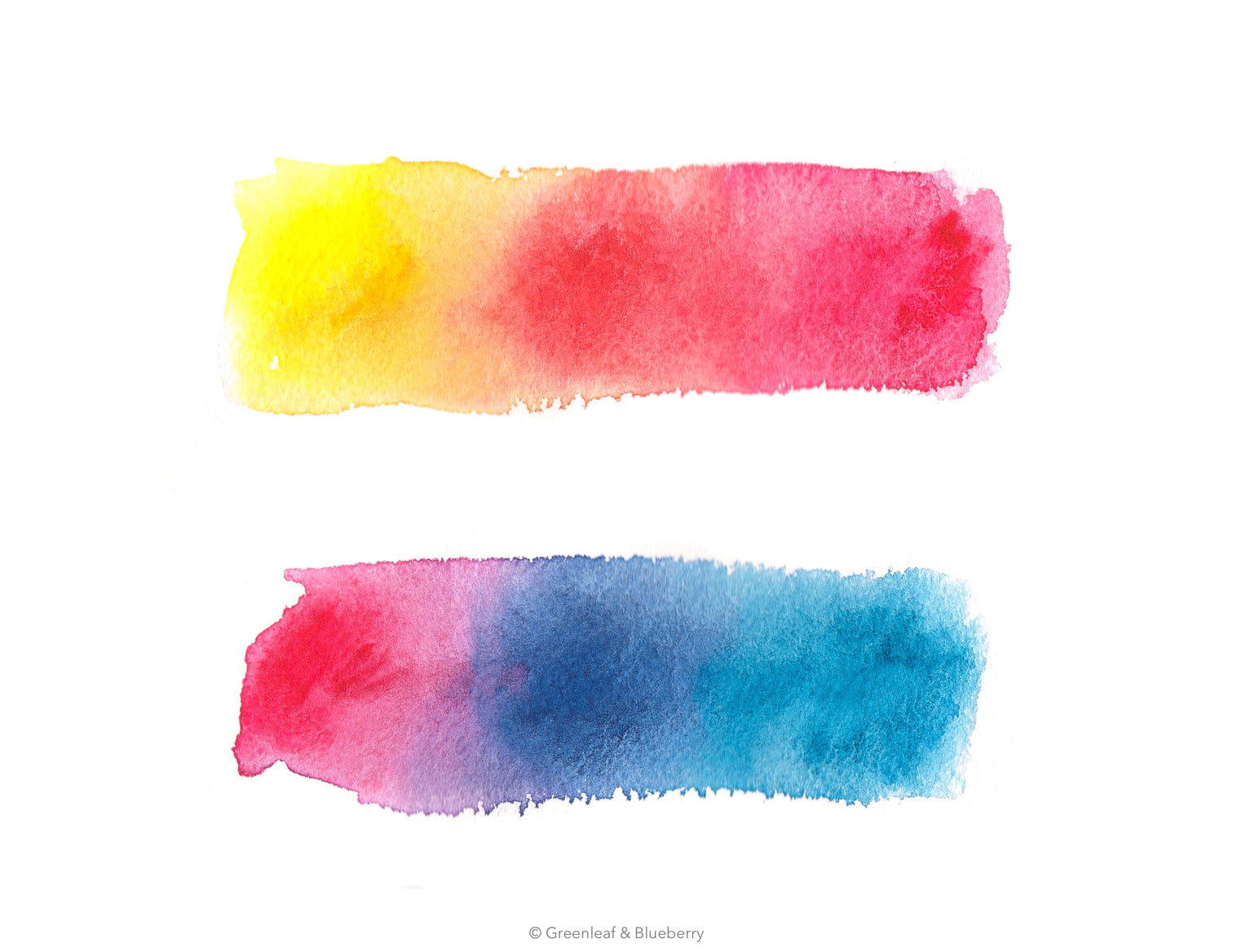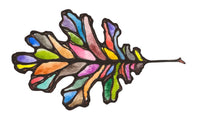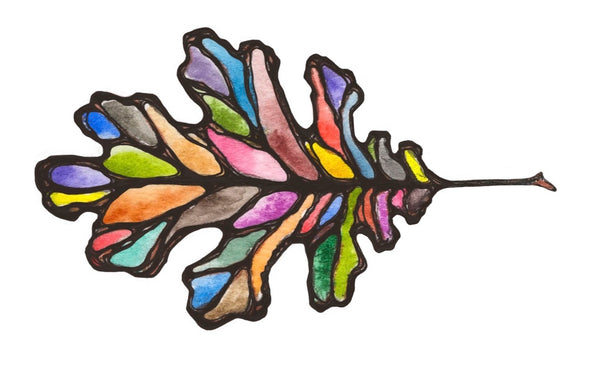
Single Pigment Paints & Three Advantages To Using Them
When I was newer to the technical side of art supplies, a descriptor such as "single-pigment", would probably have meant just about nothing to me. Now I look at paint wrappers with the same scrutiny I apply to nutrition facts on food labels - I am looking for as few ingredients as possible in both cases. And in paints, I want just one pigment and no more.
[Lead picture: our Horizon Set, a collection of natural, historical, and modern single-pigment paints.]
To dig into this concept, lets start with a parallel example:
Pigments As Spices

Something like the cook's palette...
Let's picture a typical spice cabinet: It's filled with individual spices such as cinnamon, nutmeg, turmeric, thyme, parsley, and so forth. It also contains spice blends such as Italian Seasoning, Winter Warming, Curry Powder, Bouquet Garni, Garam Masala, etc. - only you don't know that they are blends, and instead take them to be other spices.
Let's say you are making a soup and season it using your bottle of Penzy's Bouquet Garni. You taste the soup, and the flavor isn't quite there. You add more Bouquet Garni seasoning. The flavor is intensified, but just isn't quite hitting what you want. You pull out another classic soup spice: thyme. You add it to your soup, then taste the soup again. You taste the smokiness of the additional thyme, but you realize you're really trying to add a touch of brightness. So you add in some dried parsley from another jar in your spice cabinet, and a bay leaf, both classic traditional soup ingredients that should pull it in the right direction. You taste your soup again, and not only does it still have a flavor you aren't loving, the additions seem to have just muddied the flavor overrall. You're now feeling like you need to add some broth to water down the over-spiced mess, or maybe just start over.
It turns out, the ingredients in Penzy's Bouquet Garni spice blend are these: savory, rosemary, thyme, Turkish oregano, dill weed, marjoram, sage, and terragon. And the common ingredients that form the foundation of a traditional bouquet garni are: parsley, bay leaves, and thyme. Additionally, you have never been a big fan of dill or sage, and prefer rosemary with breads and sauces. All three of those spices are very distinct. Further, the eight ingredient spice blend did not contain either parsley or bay leaf.
So, the reality of what was going on is that you were unknowingly fighting against strong flavors you don't particularly enjoy and weren't expecting, and the additional ingredients brought the total spice count up to ten and muddied the flavor profile of the soup, rather than pulling it more in a specific direction as intended.
This is exactly the situation that most painters find themselves in when mixing colors. Often, some of the colors on their palette are single-pigment while others are multi-pigment paints (or pigment blends). As we'll discuss below, knowing which type of paint you are using, and if you are using blends then knowing what pigments are in them, makes all the difference.
So, let's break down the advantages to using single-pigment paints:
Single Pigment Paints Behave Predictably

Our Natural & Historical Pigments Palette, a collection of natural and historical single-pigment paints.
Working with a single pigment means there is nothing beyond the binder and your paper (or support) influencing its behavior. Each pigment possesses its own innate characteristics (learn more about pigment behavioral characteristics here). When two or more pigments are combined, so too are their characteristics.
If you use a single pigment paint across brands, you will generally get a consistent result (of course this depends on what kind of additives a given company uses; however, these generally effect hue and characteristics less than an additional pigments).
Multi-pigment paints across brands can very widely (just like spice blends from different companies). For example: three of the most well-known artist quality mass production watercolor paint producers offer a Sap Green. However, each one uses a different pigment blend for this color. Therefore, using a common blend across different companies will often yield unpredictable results.
Single Pigment Paints Allow You To Get To Know A Pigment
I personally feel more empowered as a painter when using single-pigment colors because it gives me the chance to become intimately acquainted with the colors I use. As I mentioned above, each pigment possesses its own unique set of characteristics, determined by its chemistry. Characteristics are a lot like personalities (or a flavor profile). Better knowing your pigments means having a fuller and more complete understanding of what their full potential is.
 Looking over a palette of single-pigment paints can feel a bit like getting together with friends. Characteristics vary greatly from pigment to pigment, and even from pigments that are "the same" but from different regions. This is why we include country of origin in the names of our natural pigment paints. All of this helps to create a connection to your colors.
Looking over a palette of single-pigment paints can feel a bit like getting together with friends. Characteristics vary greatly from pigment to pigment, and even from pigments that are "the same" but from different regions. This is why we include country of origin in the names of our natural pigment paints. All of this helps to create a connection to your colors.
Knowing your pigments means you can more quickly and more precisely breath life into your painting, rather than wrestling it into existence (which is less fun and far more frustrating).
 This is a monochrome (single color painting) painted with our limited release German Pyrite (a single-pigment paint, as are all of our colors). Pyrite has highly unique handling characteristics, most notably a pronounced granulation and variegation. By understanding Pyrite's personality and traits (or unique set of characteristics), I was able to use it creatively for this monochrome.
This is a monochrome (single color painting) painted with our limited release German Pyrite (a single-pigment paint, as are all of our colors). Pyrite has highly unique handling characteristics, most notably a pronounced granulation and variegation. By understanding Pyrite's personality and traits (or unique set of characteristics), I was able to use it creatively for this monochrome.
Single Pigment Paints Mix Cleanly
 Top: Quinoxalinedione Yellow is mixed with Quinacridone Magenta, Bottom: Quinacridone Magenta is mixed with Phthalocyanine Cyan. All colors sold as a mini-palette here.
Top: Quinoxalinedione Yellow is mixed with Quinacridone Magenta, Bottom: Quinacridone Magenta is mixed with Phthalocyanine Cyan. All colors sold as a mini-palette here.
Color mixing is the area where single-pigment paints really shine and prove their worth. Mixing colors predictably and cleanly is a topic unto itself that you can read more about here. However, even if you have a decent understanding of color mixing, using multi-pigment paints can still be a stumbling block.
Another parallel example for you: When color mixing, it can be helpful to think of colors like variables in a scientific experiment. The purpose of most experiments is to isolate different variables so their influence on each other can be tested. The fewer the variables involved the stronger the results. Too many variables, or worse, lurking variables, will offer less conclusive results that can raise more questions than are answered. So too with color mixing: too many pigments at play can give muddy results.
Carefully selected single-pigment paints will yield clean, predictable mixing results, in terms of both hue, predictability, repeatability, and characteristics.
These effects can be subtle, but once you begin to pay attention more closely to your mixing results, you will likely notice a difference.
Using A Pigment Blend To Mix A New Color vs. Using Only Single-Pigment Paints
Let's look at an example. Our goal is to mix a bright, fresh spring green (a nice high chroma chartreuse). We'll compare two approaches:
Approach 1: Mix Sap Green with Quinoxalinedione Yellow to brighten it and pull the hue towards yellow.
Approach 2: Mix Phthalocyanine Green with Quinoxalinedione Yellow to brighten it and pull the hue towards yellow.
Now, on the surface, Approach 1 probably seems like the way to go to mix a vibrant spring green because Sap Green is a more yellow green while Phthalocyanine Green is a more blue green. Let's take a look at our mixing results:
Approach 1:
 Notice the split pea soup tones in this swatch. It is warm, but a bit dull. This swatch has three pigments in play.
Notice the split pea soup tones in this swatch. It is warm, but a bit dull. This swatch has three pigments in play.
Approach 2:
 Notice the vibrancy of this swatch compared to the one above. It is higher chroma which gives it a kind of electricity. This swatch has two pigments in play.
Notice the vibrancy of this swatch compared to the one above. It is higher chroma which gives it a kind of electricity. This swatch has two pigments in play.
To understand why Approach 1 yielded lower chroma results we'll have to look at the ingredients of the Sap Green pigment blend, which are: Isoindolinone Yellow and Phthalocyanine Green. Isoindolinone Yellow is a very orange yellow, while Phthalocyanine Green is a very blue green. These two pigments together yield a nice earthy green mixture. However, when trying to pull it in a warmer brighter direction by using Quinoxalinedione Yellow (a cool yellow or green yellow), it has to fight against colors coming at it from two directions: from the orange direction and from the blue direction. This gives the overall color mixture a lower chroma or more brown tone to it.
Meanwhile, in Approach 2, the Quinoxalinedione Yellow was able to pull the Phthalocyanine Green in a warmer direction without also fighting against the too-warm Isoindolinone Yellow.
Swatching Out A Pigment Blend vs. Mixing From Scratch
Additionally, let's take a look at a different Sap Green (one that is a blend of three pigments). We'll swatch it out, and then let's mix it from scratch:
 This Sap Green is another blend from a top mass-manufacturer that includes these pigments: PO48 (Quinacridone Burnt Orange), PY150 (Nickel Azo Yellow), PG7 (Phthalocyanine Green). The swatches are painted from most concentrated at left to least concentrated at right.
This Sap Green is another blend from a top mass-manufacturer that includes these pigments: PO48 (Quinacridone Burnt Orange), PY150 (Nickel Azo Yellow), PG7 (Phthalocyanine Green). The swatches are painted from most concentrated at left to least concentrated at right.
 These are the same pigments used in the Sap Green swatches above, but each single-pigment paint is mixed together in a variety of different ratios. Which hexagon looks most like the Sap Green swatches above?
These are the same pigments used in the Sap Green swatches above, but each single-pigment paint is mixed together in a variety of different ratios. Which hexagon looks most like the Sap Green swatches above?
By mixing this pigment blend from scratch using single-pigment colors, you have to option to play endlessly with ratios, pulling the mixture first in one direction and then another. This dynamic way of mixing can bring a vibrancy and depth to your paintings, where pre-mixed blends can sometimes have a dead look to them.
Contrast the series of Sap Green swatches above with the pyramid of different hues just below it. Both use the same pigments, however, having the single-pigment paints at your disposal is like having access to a third dimension.
How To Tell The Difference Between Single Pigment Paints & Multi-Pigment Paints
 Only one pigment is listed. This is a single-pigment paint.
Only one pigment is listed. This is a single-pigment paint.The easiest way to discern whether a watercolor (or any paint) is single-pigment or not is to check the label. All artist/professional quality brands should list pigments on their label somewhere with a pigment index code that will look something like this:
PR102 (P for Pigment, R for Red, 102 is the code for Natural Iron Oxide)
You don't need to know pigment codes, just look for how many of them are listed to understand if your color is single-pigment or multi-pigment. Here are the pigments used in three Sap Greens from different top mass-manufacturers:
Sap Green: PG7 (Phthalocyanine Green), PY110 (Isoindolinone Yellow)
Sap Green: PG36 (Phthalocyanine Green, Yellow Shade), PY110 (Isoindolinone Yellow)
Sap Green: PO48 (Quinacridone Burn Orange), PY150 (Nickel Azo Yellow), PG7 (Phthalocyanine Green)
 Notice there is more than one pigment code listed.
Notice there is more than one pigment code listed.
What Makes Our Single Pigment Paints Different
Our entire line of colors is made up exclusively of single-pigment paints. We have never offered a pigment mixture and never plan to. We also do not use fillers in our colors. This is a significant point because it not only affects how quickly you go through your colors, but it also affects their saturation and sometimes even their hue. A filler by definition has no color really, however it can affect color, and so it is not a factor to be discounted entirely.
Additionally, we never supplement our natural pigments with the addition of synthetic pigments or any other pigments to correct for batch differences in hue or expectations of hue, as is sometimes done elsewhere. On the contrary, we take deep joy in celebrating the subtle differences of natural pigments from batch to batch.
Our colors contain one and only one pigment, no fillers, a minimal binder, and are labeled accurately.
Using Single-Pigment Paints & Pigment Blends In The Same Palette
Pigment blends can be extremely convenient and save the time of repeatedly mixing a favorite hue. The issues tend to pop up when using a pigment blend to mix with another color or colors - without realizing you are using a blend or without understanding which pigments it contains.
To use pigment blends effectively and to best advantage, I would suggest you select blends of hues that you use often, and then familiarize yourself with which pigments they contain. This will give you the information you need to make informed decisions about color mixing so that you can avoid surprise and frustration. You can also consider adding single-pigment versions of your favorite blend ingredients to your palette, so that you can make adjustments to your favorite blends without throwing in new variables
I hope this information is helpful and brings deeper joy and understanding to your painting practice! Please drop any questions you have in the comments.
As always, thank you for being here and wishing you happy painting,


